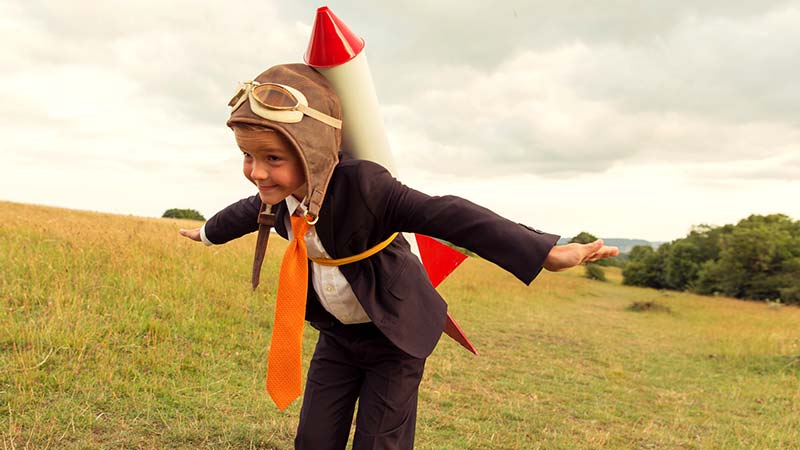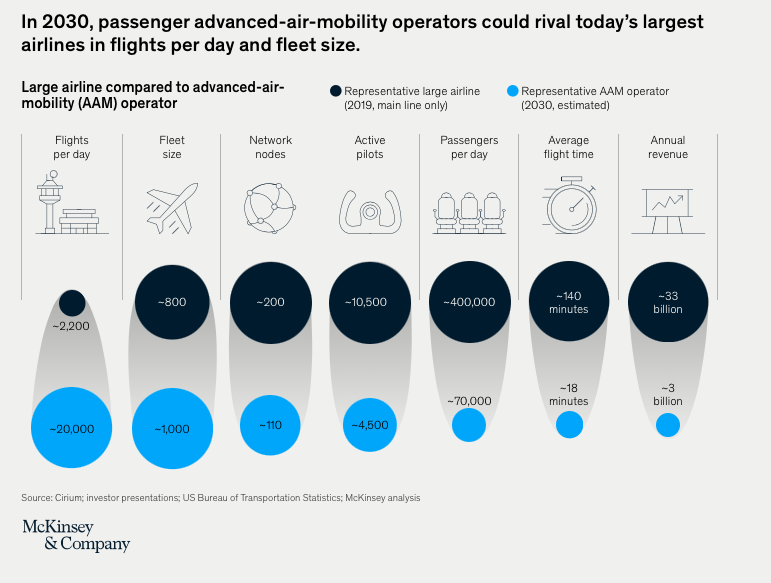Flying taxis? They could be here by 2024… but we’re gonna need more pilots

Pic: Getty
McKinsey & Company reckons that by 2030, advanced air mobility (AAM) firms could be giving the world’s largest airlines a run for their money.
By then, an electric vertical takeoff and landing (eVTOL) carrier might operate hundreds more aircraft and offer nine times the number of daily flights an airline does today.
“Picture hopping into an air taxi with up to five other passengers and taking a much shorter flight — just 18 minutes, on average,” McKinsey said.
McKinsey partner Kersten Heineke previously flagged that it’s essentially the democratisation of helicopter flight and private jets.
“That’s something that many people would not be able to afford if it weren’t for these advanced air mobility vehicles,” he said.
“Taking a private jet is something that probably less than one per cent, or much less than one per cent, of the population will ever do in their entire lifetime.”
It would be kind of like Uber rideshare in the sky – if they’d don’t call it Sky Share we’ll be disappointed.
60,000 pilots needed by 2028
But there are a few hurdles, mainly that we’ll need way more pilots.
With AAM companies with large fleets each operating about 20,000 flights a day by 2030, McKinsey estimates that eVTOL operators will need to attract and train roughly 60,000 pilots by 2028.

Market opportunity in the billions
McKinsey’s associate partner Dr Benedikt Kloss said late last year that the market opportunity could be in the billions.
“Passengers are spending more than $400 billion globally for taxi services every year. E-hailing is another $100 billion on top of that,” he said.
“If you now imagine that flying taxis can capture some of this market share and become a real alternative to the taxi by 2030, the market opportunity is in the range of several billion US dollars.”
Bloomberg noted that investors flooded the market for eVTOL aircraft with billions of dollars in 2021.
Some major airlines have even preordered about 1,500 eVTOLs – as it could be the logical next step service offering to get people to the airport to catch a longer flight – and people would pay a premium for the convenience.
You could be air taxiing early as 2024
eVTOL bosses reckon their electric aircraft will be safe, quiet, affordable and you’ll be able to fly one as early as 2024.
Lilium co-founder and CEO Daniel Wiegand reckons they will have a similar uptake as cars do today.
“This will be a standard means of transportation for our whole society. And it will become as normal for us in the 2030, ’40, ’45 time frame to use an eVTOL as we’re using cars today.”
And CEO of Volocopter Florian Reuter told McKinsey is confident people will be keen to get amongst it.
“I’m not concerned about the uptake, the willingness of people to try it out, whatsoever, because we see enough eagerness and interest worldwide,” he said.
Aviation authorities are still working on finalising safety rules that will determine airworthiness to operate commercially, Volocopter has already nabbed Design Organisation (DOA) and Production Organisation (POA) approvals from the European Union Aviation Safety Agency.
And Joby Aviation received Federal Aviation Administration Special Airworthiness Certification and US Air Force Airworthiness Approval for a second pre-production prototype aircraft in December – with the goal to launch passenger service in 2024.
Related Topics
UNLOCK INSIGHTS
Discover the untold stories of emerging ASX stocks.
Daily news and expert analysis, it's free to subscribe.
By proceeding, you confirm you understand that we handle personal information in accordance with our Privacy Policy.








